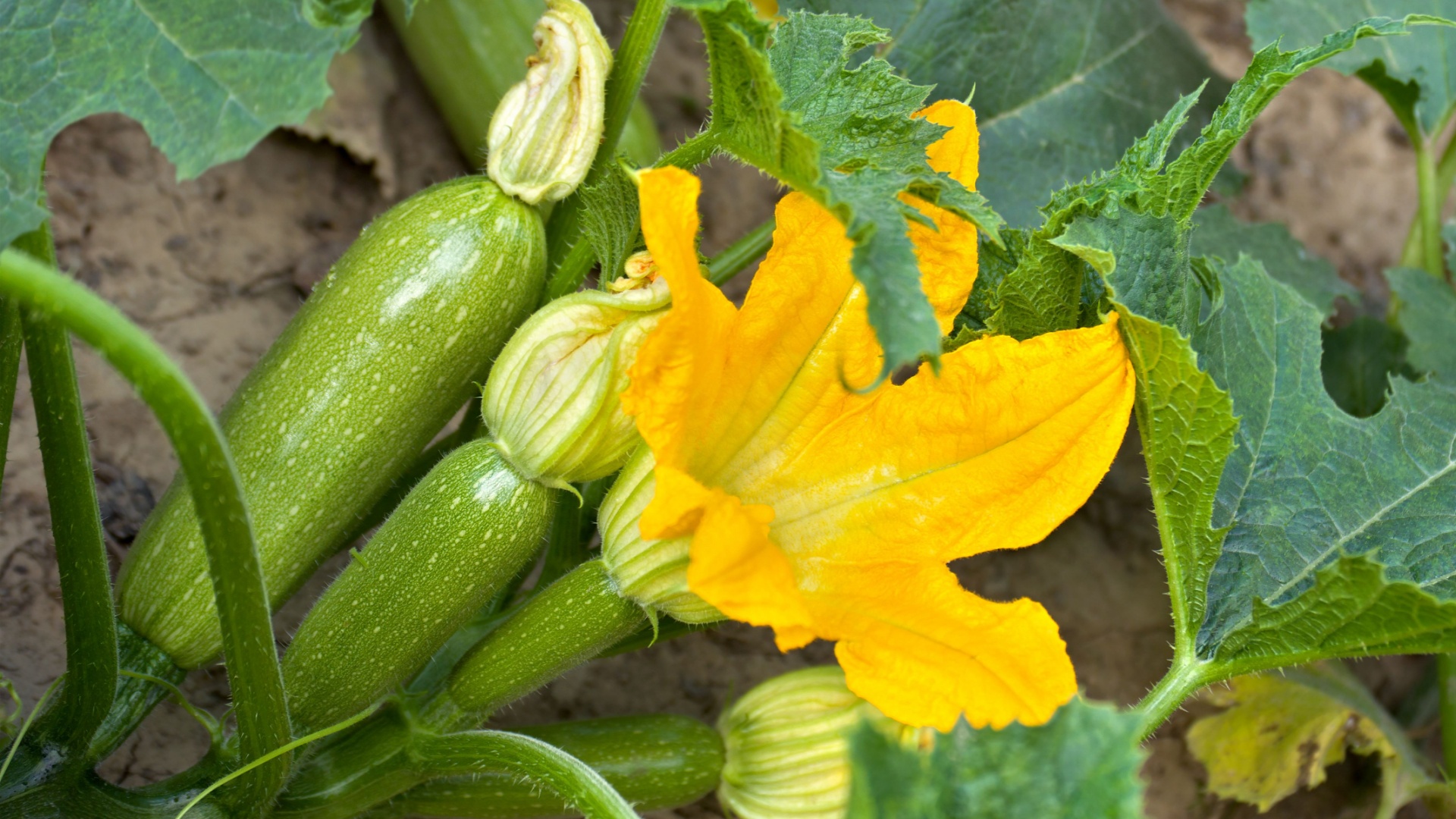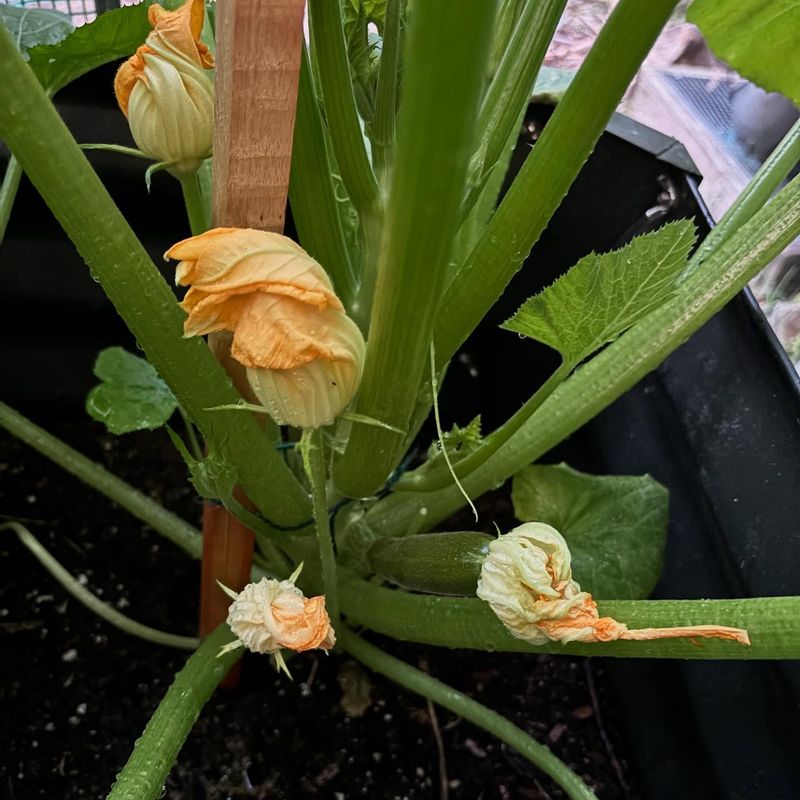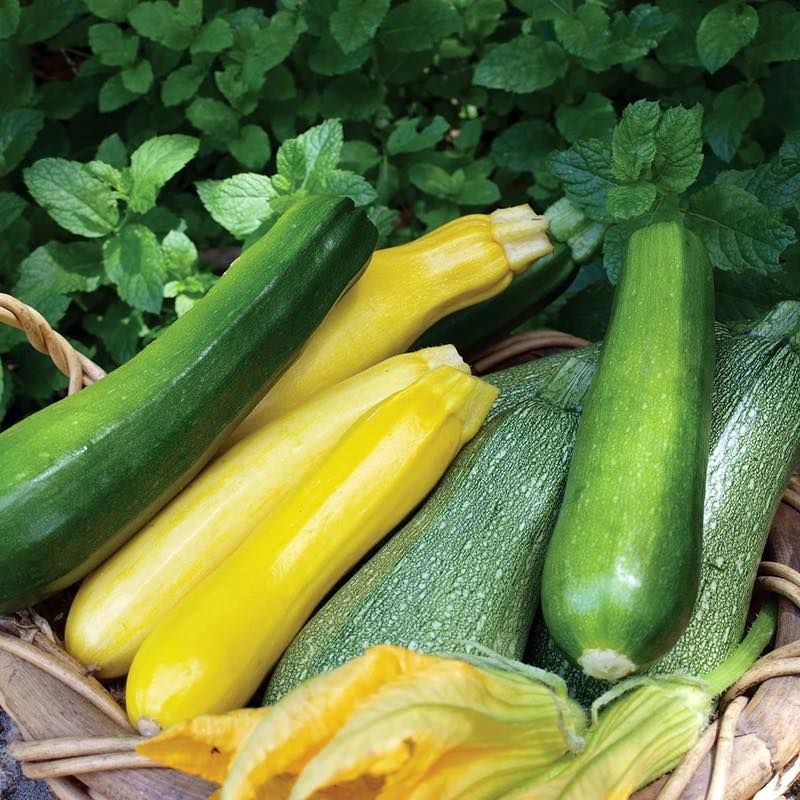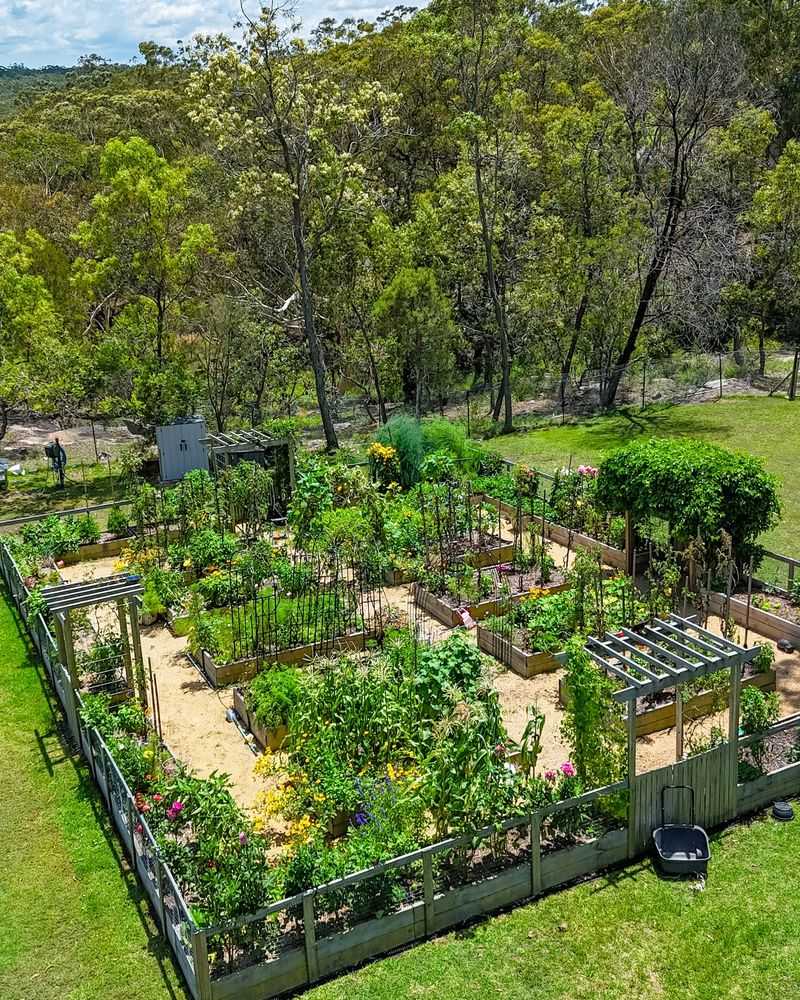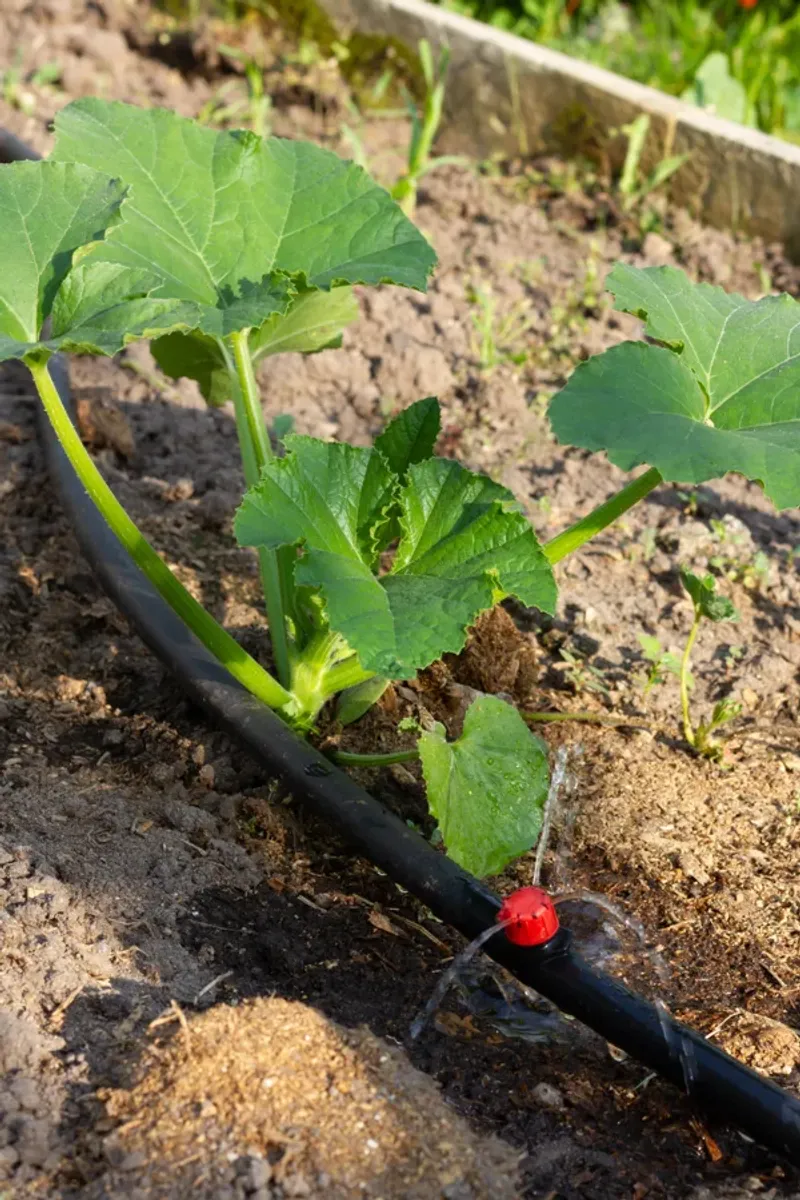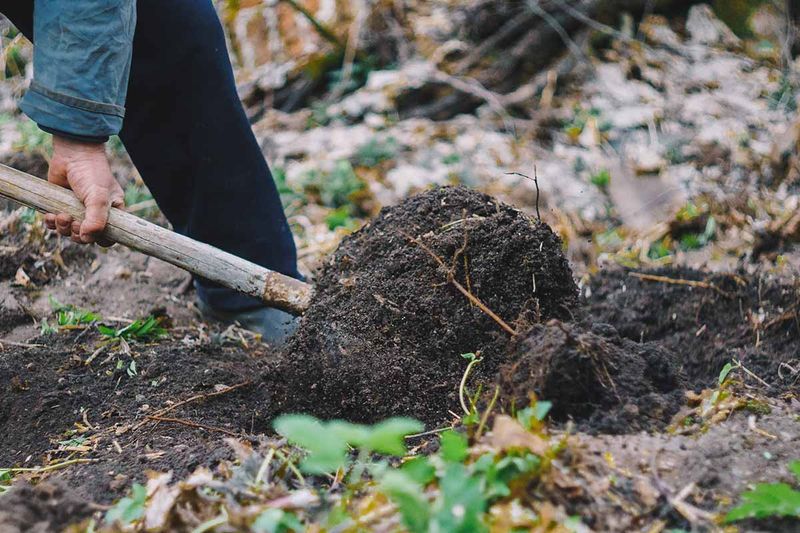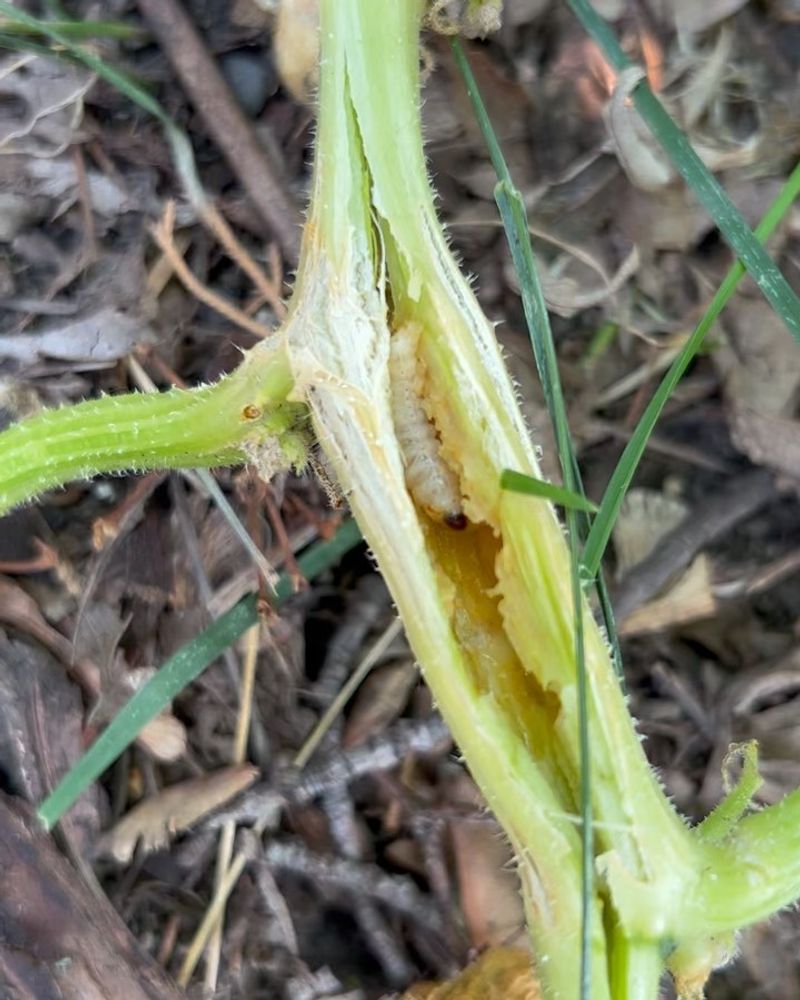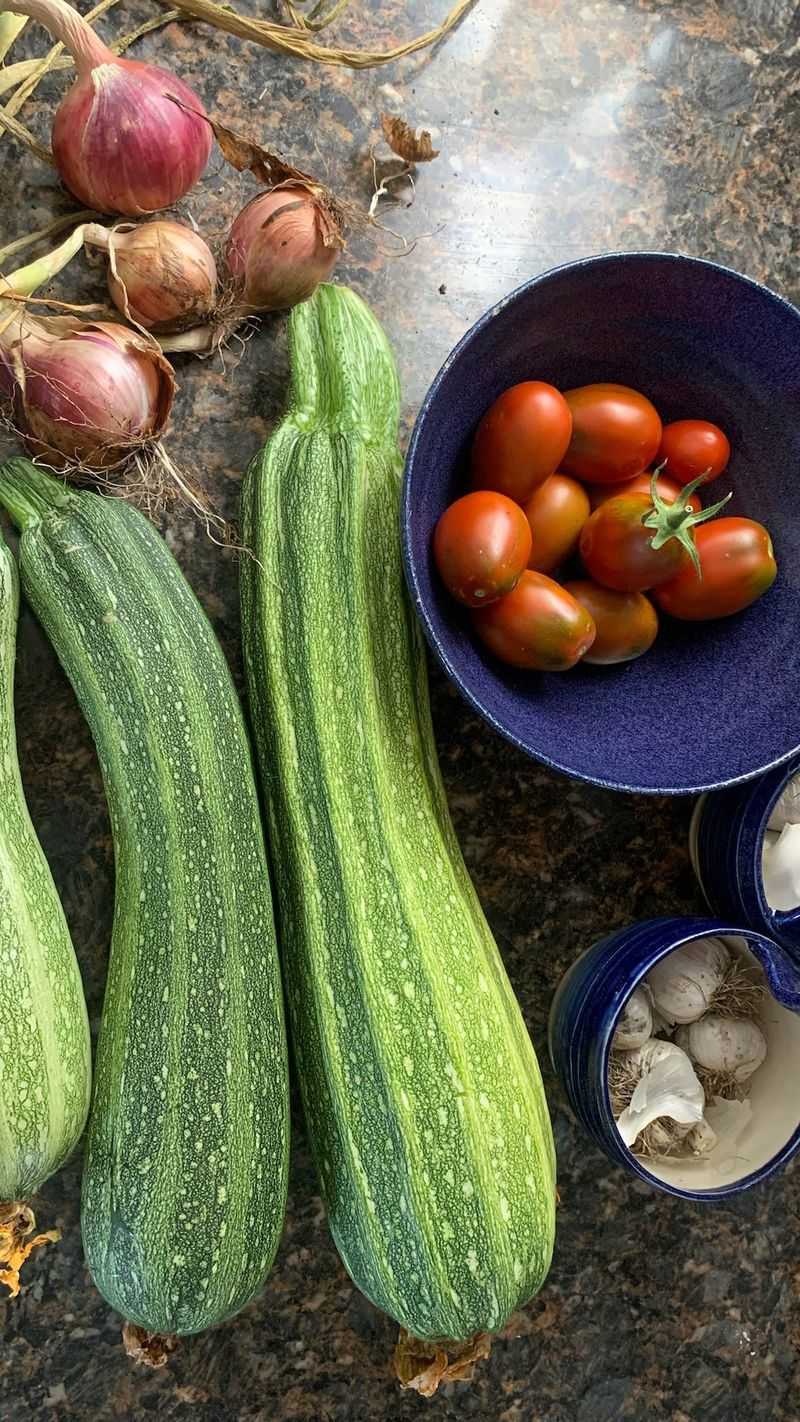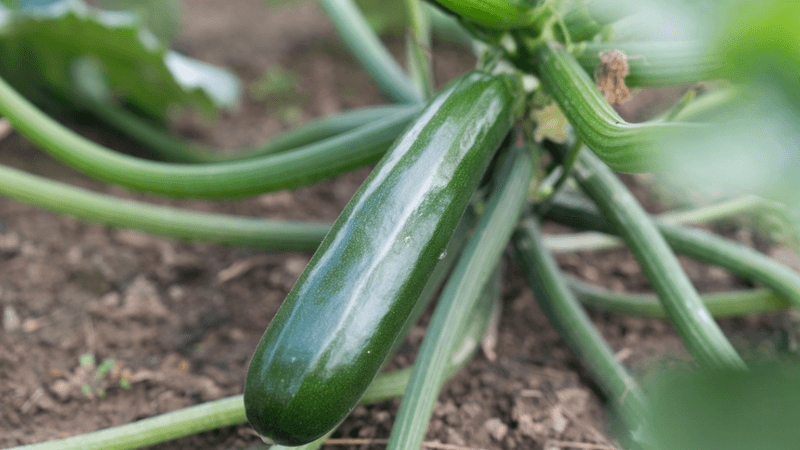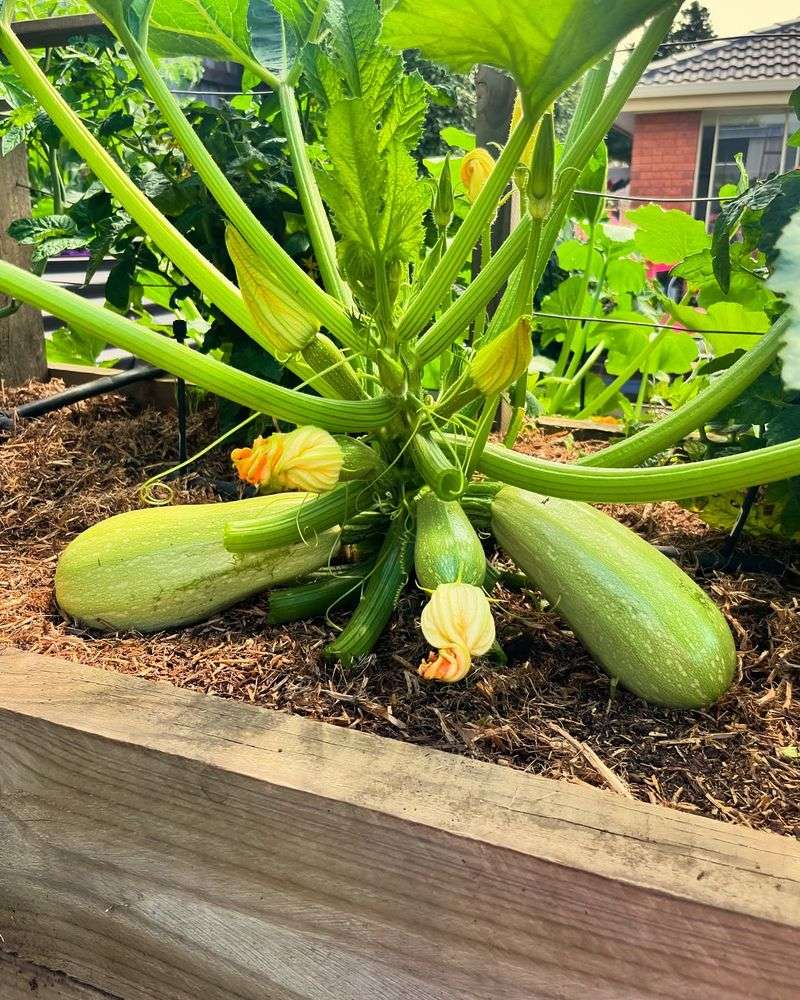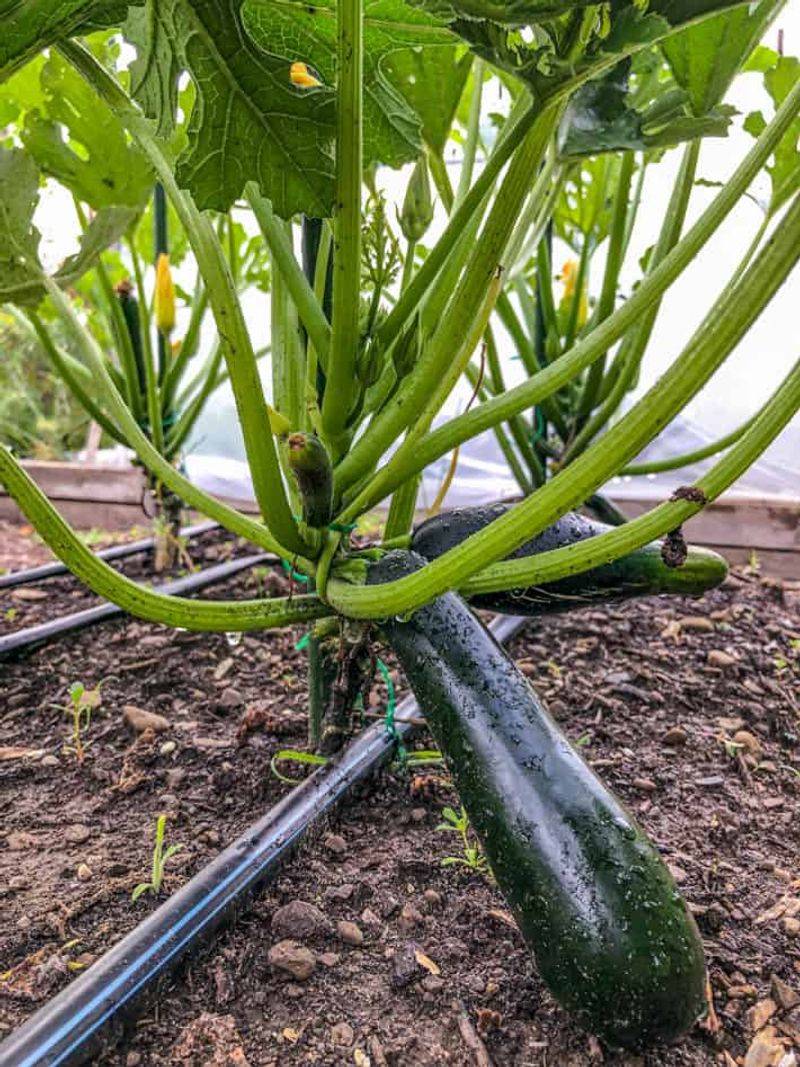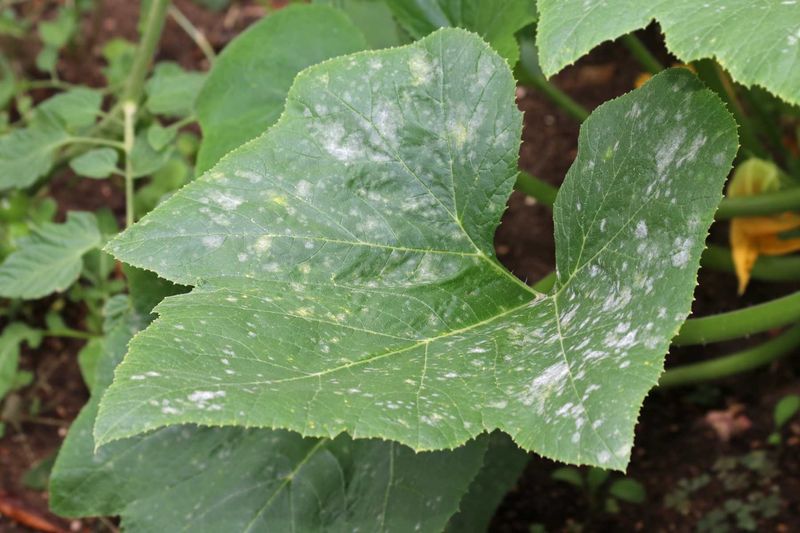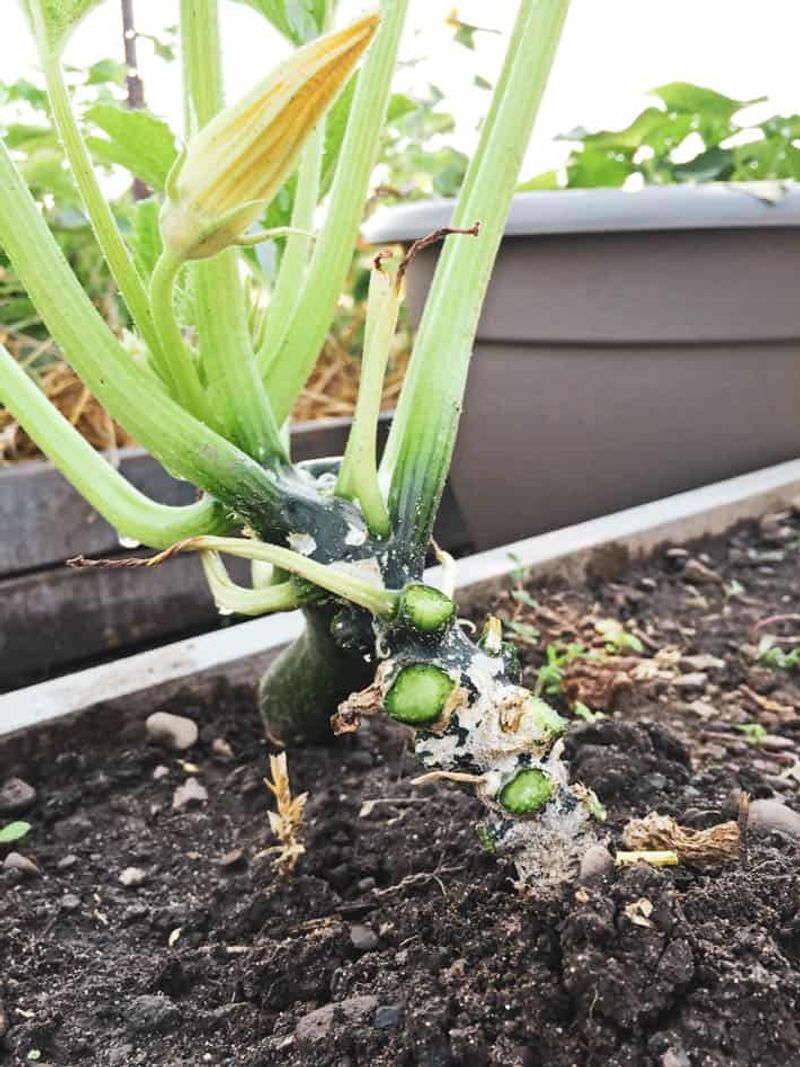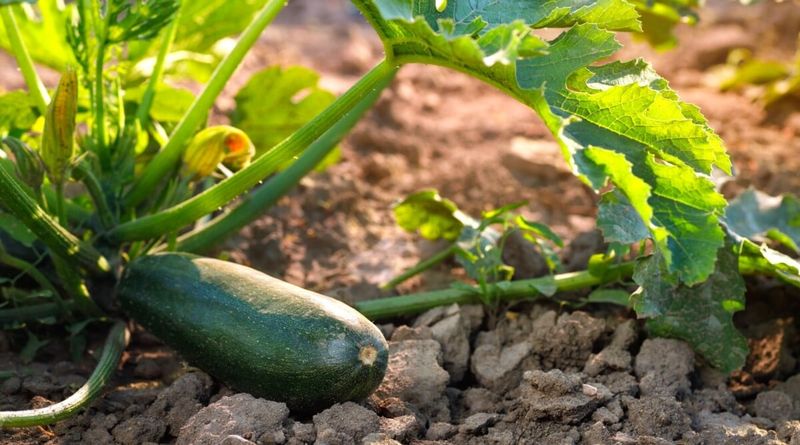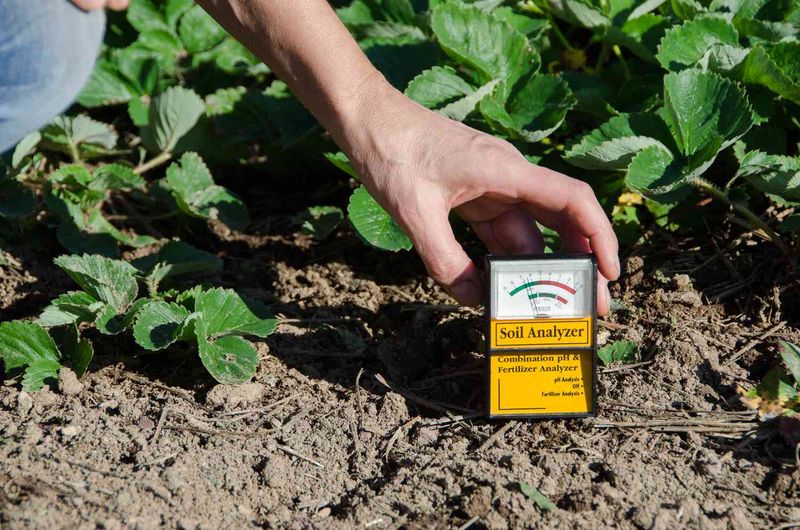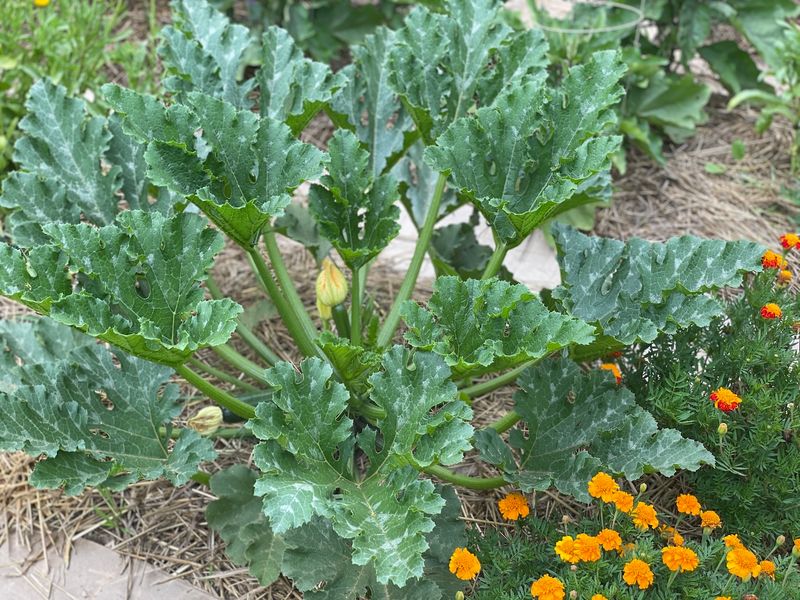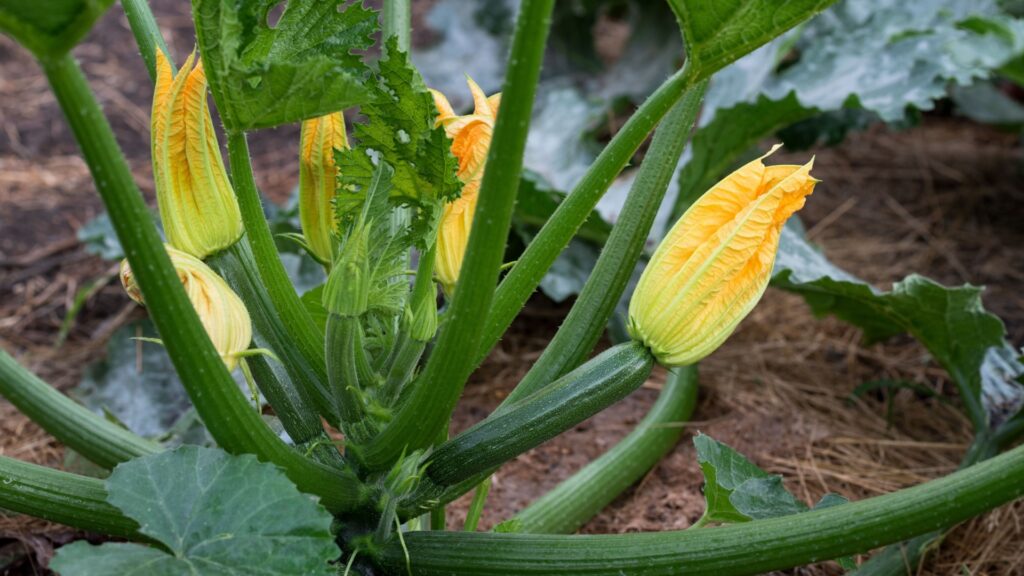Growing zucchini sounds easy—just plant a seed and brace yourself for a squash avalanche, right? If only it were that simple.
Some seasons, my plants looked like jungle royalty—lush leaves everywhere, but barely a zucchini to be found. After a few too many harvest flops, I started digging deeper.
Turns out, a handful of sneaky slip-ups can leave you with all show and no squash. Here are the top culprits I’ve battled (and beaten) that might be holding your harvest hostage too.
1. Poor Pollination
Male and female flowers need to meet for zucchini to form, and sometimes nature needs a helping hand. I’ve stood watching my plants for hours wondering why fruit would start to grow then shrivel up and die.
The issue? Not enough bees in my garden. You can hand-pollinate by taking a small paintbrush or cotton swab and transferring pollen from the male flowers (the ones with a straight stem) to the female flowers (with the tiny zucchini at the base).
Morning is the best time for this little matchmaking session, when flowers are wide open and receptive.
2. Planting Too Early
Eager to get a jump on the growing season, I once planted my zucchini seeds when there was still a chance of frost. Big mistake! These heat-loving plants sulked for weeks, barely growing at all.
Zucchini needs soil temperatures of at least 60°F (15°C) to thrive. Planting too early stresses the plants and can lead to stunted growth or failure to produce fruit later on.
Wait until nighttime temperatures stay consistently above 50°F (10°C) before putting seeds or seedlings in the ground. Your patience will be rewarded with stronger plants and better harvests.
3. Overcrowding Plants
“More plants means more zucchini!” That’s what I thought until my garden turned into an impenetrable jungle with hardly any fruit. Zucchini plants are space hogs, plain and simple.
When crowded, they compete for nutrients, water, and sunlight. Air circulation also gets compromised, creating the perfect environment for powdery mildew and other diseases that affect fruit production.
Give each plant at least 3-4 feet of space in all directions. It seems excessive when they’re tiny seedlings, but trust me—those little plants will become monsters before you know it.
4. Incorrect Watering Habits
The year I watered my zucchini plants every day with a light sprinkle, I got beautiful leaves but hardly any fruit. Shallow watering encourages shallow roots, making plants less resilient and productive.
Zucchini prefers deep, infrequent watering that reaches about 1-2 inches per week. This encourages roots to grow deeper into the soil where they can access more nutrients and moisture during dry spells.
Water at the base of plants rather than overhead to keep leaves dry and reduce disease issues. A soaker hose or drip irrigation system works wonders for consistent, deep watering.
5. Ignoring Soil Quality
My first attempt at growing zucchini was in hard clay soil that I hadn’t amended at all. The plants looked stunted, and the few zucchinis that formed were small and misshapen.
Zucchini are heavy feeders that need rich, well-draining soil to produce their bounty. Before planting, work in plenty of compost or aged manure to improve soil structure and fertility.
Consider adding a balanced organic fertilizer at planting time too. Your soil feeds your plants, and your plants feed you—investing in good soil pays delicious dividends!
6. Neglecting Pest Control
Last summer, I noticed my zucchini flowers dropping before they could set fruit. Upon closer inspection, I found the culprits—squash vine borers had invaded the stems and were destroying my plants from the inside out.
Regular inspection is your best defense. Look for small holes in stems with sawdust-like material, wilting despite adequate water, or insects on leaves and flowers.
Row covers during early growth can prevent many pest issues, but remove them when flowering begins to allow pollination. For organic control, try neem oil or insecticidal soap before problems get out of hand.
7. Too Much Nitrogen Fertilizer
When my zucchini plants grew enormous with lush green leaves but barely any fruit, a gardening friend pointed out my fertilizer mistake. I’d been using a high-nitrogen lawn fertilizer, essentially telling my plants to focus on leaf growth instead of fruit production.
Excess nitrogen creates beautiful foliage at the expense of flowers and fruit. For established plants, switch to a fertilizer with less nitrogen and more phosphorus and potassium (the middle and last numbers on the fertilizer label).
A 5-10-10 formula works well once plants start flowering, encouraging them to channel energy into fruit rather than leaves.
8. Harvesting Too Late
I once thought bigger was better and left my zucchinis on the plant to grow as large as possible. Then I wondered why new fruits stopped forming altogether.
Leaving mature zucchinis on the plant signals it to focus energy on developing seeds in those existing fruits rather than producing new ones. It’s basically saying, “Mission accomplished, no need for more babies!”
Harvest zucchinis when they’re 6-8 inches long for best flavor and to keep the plant producing. Even if you can’t use them all, picking regularly stimulates the plant to keep flowering and fruiting throughout the season.
9. Choosing The Wrong Variety
After struggling with disease-prone zucchini for years, I switched to a variety bred specifically for my humid climate. What a difference! Some varieties simply aren’t suited to certain growing conditions.
Research which zucchini varieties perform well in your specific climate and garden conditions. In hot, humid areas, look for disease-resistant varieties that can withstand powdery mildew pressure.
For shorter growing seasons, choose faster-maturing varieties. Seed catalogs and local extension offices can recommend varieties that have been tested in your region, setting you up for success from the start.
10. Inadequate Sunlight
The year I grew zucchini in a partially shaded spot, my harvest was pitiful. The plants stretched toward the sun, growing lanky and weak, with few female flowers developing.
Zucchini plants are sun worshippers that need at least 6-8 hours of direct sunlight daily to produce well. Without enough light, photosynthesis is limited, and the plant can’t generate enough energy to create and sustain fruit.
Choose the sunniest spot in your garden for these light-hungry plants. If your garden is partially shaded, consider growing bush varieties that take up less space and can be positioned to maximize available sunlight.
11. Inconsistent Moisture Levels
My zucchini plants once experienced a cycle of drought followed by heavy rain. The stress caused flowers to drop and developing fruit to become misshapen or rot at the blossom end.
Zucchini plants need consistent moisture to develop and maintain their fruits. Fluctuations can cause stress that leads to poor pollination, blossom drop, and fruit abnormalities.
Adding a 2-3 inch layer of organic mulch around plants (keeping it away from stems) helps maintain soil moisture levels and reduces watering needs. This simple step creates a more stable environment that encourages steady fruit development.
12. Ignoring Plant Diseases
I once ignored some yellow spots on my zucchini leaves, thinking they weren’t serious. Within weeks, powdery mildew had covered the plants, drastically reducing their ability to photosynthesize and produce fruit.
Common zucchini diseases like powdery mildew, downy mildew, and bacterial wilt can quickly devastate plants if left untreated. Early detection and intervention are crucial for maintaining plant health and productivity.
Inspect plants regularly, especially leaf undersides. Remove affected leaves promptly and improve air circulation by proper spacing. Preventative measures like neem oil applications and avoiding overhead watering can reduce disease pressure significantly.
13. Disturbing The Root System
When weeding around my established zucchini plants one year, I got too aggressive with the hoe and damaged some roots. Those plants never fully recovered, producing fewer fruits than their undisturbed neighbors.
Zucchini plants have sensitive, shallow root systems that can be easily damaged by cultivation. Once plants are established, avoid deep digging or hoeing near the base of the plant.
Hand pull weeds close to plants or use mulch to suppress weed growth altogether. If you must cultivate, stay at least 12 inches away from plant stems to avoid damaging the critical feeder roots that supply water and nutrients.
14. Skipping Succession Planting
For years I planted all my zucchini at once, enjoying a brief period of abundance followed by declining production as plants aged. Then I tried staggering my plantings and had fresh, productive plants all season long.
Even with perfect care, zucchini plants eventually slow down their production as they age. Planting new seeds every 2-3 weeks (through mid-summer) ensures you’ll have younger, more productive plants coming along as older ones decline.
This succession planting strategy also provides insurance against pests or disease wiping out your entire crop at once. Plus, you’ll avoid the feast-or-famine cycle that often comes with growing zucchini.
15. Forgetting To Test Soil pH
After several disappointing harvests, I finally tested my soil and discovered it was too acidic for optimal zucchini growth. A simple pH adjustment made a world of difference the following season.
Zucchini prefers slightly acidic to neutral soil with a pH between 6.0 and 7.0. When soil is too acidic or too alkaline, nutrients become less available to plants even if they’re present in the soil.
Test your soil before planting and amend as needed with lime to raise pH or sulfur to lower it. This inexpensive test can prevent frustration and dramatically improve your harvest potential by ensuring nutrients are actually available to your plants.
16. Ignoring Companion Planting Benefits
The summer I planted nasturtiums and marigolds around my zucchini was my best harvest ever. These companion plants attracted beneficial insects while deterring common zucchini pests.
Strategic companion planting can significantly boost pollination and reduce pest pressure without chemicals. Nasturtiums attract pollinators and can trap aphids away from your zucchini. Marigolds deter nematodes and other soil pests with their root secretions.
Herbs like dill and basil also make excellent companions, attracting predatory insects that feed on squash bugs and other pests. Just avoid planting potatoes nearby, as they can transmit diseases to zucchini plants.
17. Letting Weeds Compete With Your Plants
One summer I got a little lazy with weeding, figuring the zucchini would muscle through. But the result was weaker plants and fewer fruits than usual. Turns out, weeds aren’t just unsightly—they’re resource hogs.
Weeds compete directly with zucchini for water, nutrients, and sunlight. They also crowd the base of the plant, reducing airflow and increasing the risk of fungal diseases like powdery mildew.
Stay on top of weeding, especially in the early stages when zucchini seedlings are most vulnerable. Mulch helps a lot here too—by blocking sunlight from reaching weed seeds, it reduces their chance to sprout while keeping your plants happy and hydrated.

